
The Writings of Sayyid Kāẓim al-Husayni al-Rashtī (d.1259/1843).
Stephen Lambden UC-Merced.
Under revision and replacement 1980-90s
In Progress - Under revision 2017
Very little bibliographical, translation and other work has been done on the hardly studied writings of Sayyid Kāẓim Rashtī, the Persian born successor to Shaykh Aḥmad al-Aḥsā'ī (d.1241/1826). Though there are several bibliographical lists of his writings (e.g. Kirmānī, Fihrist, Pt. II) there seems to be no reliable or fully comprehensive list of either those published or in mss. Quite a number of "old", 19th cent. printings of key texts of Sayyid Kāẓim were made, though these works are now very difficult to obtain. Select twentieth century printings or reprints periodically previously put out (up till the 1970s or later) from Kirmān (Iran, from the Sa`adat press) and other publishers, also remain, for the most part, difficult to consult in hard copy. Several important Shaykhī microfilm collections are available internationally from which copies of select books and manuscripts can be obtained (e.g. Chicago, Regenstein Library), see the lower 3 pages of this URL: Add
As will be evident, however, items from the first two Shaykhs of the Shaykhī school are not that well-represented; 2 microfilm reels of Sayyid Kāẓim!
As will be evident below, however, modern editions of Sayyid Kāẓim's Arabic works have begun (in the last decade) to be published in Beirut (Lebanon), Damascus (Syria) and Kuwait... (See below). Please communicate additions or corrections : slambden@ucmerced.edu
A Note on Select Bibliographical sources for the Arabic and Persian writings of Sayyid Kāzim Rashtī.
- (1) Fīhrist-i Sayyid compiled by Sayyid Kāẓim Rashtī himself. A bibliographical list his own works and those of Shaykh Aḥmad. Listed in School of Oriental and African Studies, Mss No. 92308, Item no. 38, pp. 398a-406b. See also Adam Gacek, Catalogue of the Arabic Manuscripts in the Library of the School of Oriental and African Studies, London, 1981, No. 277, pp. 165-9. This list of Sayyid Kāẓim was composed in Rajab 1258/1842 and the manuscript is written by Jawād ibn Qāsim al-Najjar in Kufa and completed on 30 Dhu'l-Ḥijjih 1259 / January 1844, 19 days after the death of Sayyid Kāẓim" (Momen, BSBM1).
- (2) Fihrist-i kutub-i mashāyikh `izam by Shaykh Abu'l-Qāsim Kirmānī. 3rd Kirmān: Chāpkhāna Sa`ādat, n.d (several reprints). Ongoing translation URL below
- (3) In 1345/1926 Sayyid `Abdu'l-Majid Fa'iqī wrote a large (1500pp.) bibliographical list of the writings of all of the Shaykhī leaders
- (4) Nicholas' bibliography in his SÉYYED KAZEM RECHTI, Ch. II: 32-36 (See below)

A. L. M. Nicolas (1864-1937)
Perhaps the earliest western bibliographical listing of Sayyid Kāẓim's Arabic and Persian writings was that of the French scholar of Babism and Shaykhism, A. L. M. Nicolas (d. 1937). In vol. II of his also 4 volume Essai sur le Shaykhism... He utilized the Fīhrist-i Sayyid (see above) for both his list of the works of Shaykh Aḥmad (in the Essai sur le Cheikhisme, I. Cheikh Ahmed Lahçahi, (Paris, 1910), 63-72) as Sayyid Kazim in his Essai sur le Cheikhisme, II SÉYYED KAZEM RECHTI. (see SOAS mss. ADD). In this latter work (Ch. II: 32-36 ), Nicolas includes a French (Persianized) transliterated list of 135 major writings of Sayyid Kāẓim Rashtī. The list will be repeated in the URL below with a modern English transliteration added :
- Pdf. of Nicholas Essai sur le Cheikhisme, II SÉYYED KAZEM RECHTI. SKR-Essai-ii-1914.pdf
- SÉYYED KAZEM RECHTI, Ch. II: 32-36 - nicholas_skr_ii.pdf
The Ibrahmi [Kirmani] Fihrist Pt. II
An Annotated Translation of the Sayyid Kāẓim Rashtī Bibliography in Pt. II of the Fihrist (3rd Ed. Kirman : Chapkhana Sa`adat, n.d [1977] of Shaykh Abu'l-Qāsim ibn Zayn al Abidin Khan al-Kirmānī (d.1389/1969). Translation and annotation Stephen Lambden (under revision and completion).
Add Pdf of revised version here
See also the main Shaykhi page. On the old, uncorrected Hurqalya Website =
An Annotated Alphabetical Lisitng of Select mss. and published writings of Sayyid Kāzim al-Husayni al-Rashtī.
Last partial revision 26-03-2017.

Anwār al-ghayb, masā'il muta`addid ("Lights of the Unseen, Multifarious issues").
Anwār al-ghayb, masā'il mu`tu`addida li-ḥakīm al-awwal, hiya Sayyid Kāẓim al-Husayni, al-Rashtī... [No. 2 on cover]. ("Lights of the Unseen, Multifarious Issues by the foremost philosopher who is Sayyid Kāẓim Rashtī (may God elevate his station) (1212-1259 AH). Lajna Iḥyā' turath madrassa al-Shaykh al-Ahad [n.p.] 1st printing [1,000 copies] 1421/2000. A small 131 page Arabic booklet (+2 page index) edited by Aḥmad `Abd al-Wahhāb al-Bushafī`
- Anwār al-ghayb, masā'il muta`addid ("Lights of the Unseen, Multifarious issues"). A compilation of miscellaneous replies to religious and philosophical issues by SKR edited and annotated by Aḥmad `Abd al-Wahhāb al-Būshafī` and put out from Damascus (Syria) through the Sayyida Zaynab / Lajnat Iḥyā Turāth Madrassa al-Shaykh al-Awḥad [al-Aḥsā'ī]. 1st ed. 1421/ 2000.
The introductory, editorial part occupies pp.1-20 and the next 4 pages reproduce the mss. on which sections of this printing is based. Section one is on al-Malā'ikat (The Angels [Angelology]) in 4 main divisions spanning pp. 31-77. Section two is entitled Tajdīd al-Khilqa (The Renewal of the Created Order, pp. 79-94) and is primarily SKR's response to a question about the state of things after the qiyāmat al-kubrā (the Greatest [Eschatological] Resurrection) relative to the khalq jadīd ("new Creation") mentioned in a tradition from of Imam Ja`far al-Şādiq as cited by Ibn Babuwayh (d. 381/991) in his Kitāb al-khiṣāl.
Section three is a response to a question about about whether al-fi`l (the Active Reality) is something nobler than al-maqāmāt (the ranks or levels [of human activity]) and the ism al-fā`il ([active participle] the [Shaykh as the] name of the One Efficacious, pp. 95-111). Complex metaphysical issues are discussed in this section. The fourth section is the response of SKR to a question about metaphysical and philosophical issues surrounding the nature of al-ḥarakat al-jawhariyya ("substantial motion", a central concept in the philosophy of Mulla Şadrā) ( pp.117-127). The book ends with a note signed by Aḥmad al-Bushafī` al-Aḥsā'ī (dated 3rd Sha`bān 1419/ 23rd Nov. 1998), a list of sources drawn upon in the book and and Index (pp. 130-137).
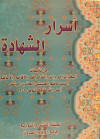
Asrār al-`ibādāt (The Mysteries of acts of Servitude)
اسرارالعباداة
- Asrār al-`ibādāt (The Mysteries of acts of Servitude) (1st printing) Kuwait: Jami` al-Imam al-Sadiq, 1422/1999. 268pp. Green Pbk. [No. 3 on cover]
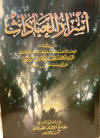
Asrār al-shahāda sirr al-ḥaqīqat fī waq`at al-ṭufūf.
اسرارالشهادة سّرالحقيقة في وقعة الّطفوف
- Asrār al-shahāda sirr al-ḥaqīqat fī waq`at al-ṭufūf. ("The Mysteries of the Shahāda [Testimony of Faith]; the secret of the reality regarding the incident of the ... ? ). Sayyida Zaynab / Lajnat Iḥyā Turāth Madrassa al-Shaykh [al-Awḥad] al-Aḥsā'ī. 1st ed. 1421/ 2000.[No. 3 on cover]


Two printings of the Dalīl al-mutaḥayyirīn
Dalīl al-mutaḥayyirīn ("The Proof regarding Matters Perplexing"), written 1258/ 1840-41.
A work of Sayyid Kāẓim in response issues surrounding the differences between the person and doctrinal positions of Shaykh Aḥmad al-Ahsā'ī and other Shī`ī Muslims. Completed near Kufa (Iraq) 11th Rabī al-Thānī [II] 1258/ May 22nd 1842.
- Dalīl al-mutaḥayyirīn ("The Proof regarding Matters Perplexing") 1st ed. [Tabriz?], 1276/1859-60.
- Dalīl al-mutaḥayyirīn. 2nd Arabic ed. Maṭba`at al-Sa`adat, Kirmān, n. d. [197?] 178pp. PDf. Dalīl al-mutaḥayyirīn.pdf
The most recent Arabic 2nd ed. 3rd printing of 1423/2002 (see above) is the very beautifully printed edition with pictures of Shaykh Ahmad, Sayyid Kāẓim and the Kuwaiti born al-Ḥajjī Mīrzā`Abd al-Rasūl al-Ḥā'iri al-Iḥqāqī [Born 22nd Mehr 1307 Sh. / ADD ] on the front cover (as well as on many inside pages). .185 pp. + Index (pp.186-7) ...
Persian Translations of the Arabic Dalīl al-mutaḥayyirīn
The 1st Arabic edition was translated into Persia the disciple of SKR named Muhammad Raḍī ibn Muhammad Riḍā', 1st ed. Jumadī al-Awwal 1261/ May 1845. (Dhari`a 8:360).
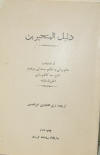
- Dalīl al-mutaḥayyirīn, 2nd (Arabic) ed. Maṭba`at al-Sa`adat, Kirmān, n. d. [197?] 178pp.
There is also (see above) a Persian trans. by Zayn al-Ābidīn Ibrāhīmi . 2nd printing Kirmān: Chāp-Khānih Sa`adat. pp. 4 (Index)+ 181pp.
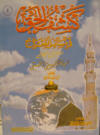
Kashf al-ḥaqq fī masā'il al-mi`rāj
كشف الّحق ّ في مسائل المعراج
- [al-Risāla] Kashf al-ḥaqq fī masā'il al-mi`rāj [4 on cover] ("The Unveiling of Reality respecting issues surrounding the Mi`rāj ("Night Ascent of Muhammad")
A detailed and multi-faceted account of the interpretation of the mi`rāj of Muhammad by Shaykh Aḥmad as defended and further expounded by Sayyid Kazim Rashti. Edited and introduced by Ḥaj Amīr `Askarī and Raḍī Nāṣir al-Salmān. Damascus, Syria: Lajnat Iḥyā Turāth Madrassa al-Shaykh al-Awḥad [al-Aḥsā'ī]. Beirut: Mu'assat al-Balāgh. 1st ed. 15th Rabī` al-Awwal 1421/ 18th June 2000. pp.155 (= Introduction by Raḍī Nāṣir al-Salmān pp. 7-17+ mss. repro. pp.19-20 +pp. 21-24 = Preliminary Introductory Notes + pp. 25-155 = main text(s) of the Book + pp.156-166 = Concluding Note, Sources cited and Index).
Kitāb Lawāmiʻ al-Ḥusayniyya ("[Book] Expressive of the Ḥusaynid Brilliances").
Final item within the composite collection of the writings of Sayyid Kazim Rashti entitled
- [Kitab] Kitāb Sharḥ āyat al-kursī : wa ... Kitāb Sharḥ ḥadīth ʻImrān Ṣābī ; wa ... Kitāb Lawāmiʻ al-Ḥusaynīyah. Tabrīz[?]: Add., 1271/ 1853-4.
RASA'IL SAYYID KAZIM RASHTI.
Sayyid Kāẓim Rashtī
- Badāʼiʻ al-ḥikmah : risālat ʻAbd Allāh Bayk. Ed. Ṣāliḥ Aḥmad Dabbāb. Beirut: Dār al-Maḥajjah al-Bayḍāʼ, 2005.
- Badāʼiʻ al-ḥikmah : risālat ʻAbd Allāh Bayk. Ed. Ṣāliḥ Aḥmad Dabbāb. Beirut: Muʼassasat al-Balāgh lil-Ṭibāʻah wa-al-Nashr wa-al-Tawzīʻ, 2007+8. 255 pages.
[Rasā'il] al-Sayyir wa'l-sulūk ilā Allāh ("[Treatise of the] Journeying and the Path unto God").
السير والسلوك الى الله
- Rasā'il] al-Sayyir wa'l-sulūk ilā Allāh ["The Journeying and the Pathway unto God"] ...[by] Sayyid Kāẓim al-Ḥusaynī al-Ḥā'irī al-Rashtī,
Arabic text (ed.) Āyāt-Allāh al-Ḥajji Mīrzā `Abd al-Rasūl al-Ḥā`iri al-Iḥqāqī Reprinted from Majmū`a al-Rasā'il li-l-Sayyid Kāẓim. [Kuwait] : Jā`mi al-Imam al-Muhammad Sādiq, 1421/2000. 192pp. consisting of a brief introd. to the life of Sayyid Kazim (pp.3-11), the al-Sayyir wa'l-sulūk ilā Allāh (pp.12-91). Its authorship and date of composition, the 10th Muḥarram 1243 / 3rd August 1827 CHECK THIS p.175-185 (= the Khuṭba al-Bāligha of Sayyid Kāẓim) pp.187-192 (Index). ADD
Another printing of Sayyid Kāẓim al-Ḥusaynī al-Rashtī's
- al-Sulūk ilā Allāh (see above) is that edited by Muhammad Sāliḥ Aḥmad al-Dabbāb, (1st printing). Beirut [Damascus]: Mu`assat Fikr al-Awḥad li'l-Taḥqiq wa'i-Ṭaba`at wa'l-Nashr, 1423/2002, 160pp (incl. index = pp.157-60).
The text follows some introductory, editorial notes including a chart of the abjad numerical system (p. 12) and a two page reproduction of the opening and ending of the autograph mss., (pp. 13-14) from p. 21ff. The text printed here is apparently a reprint of the edition of Āyāt-Allāh Mīrzā `Abd al-Rasūl al-Ḥā`iri al-Iḥqāqī (see above)
Behmardi, Vahid (ed.)
- Risālat as-Suluk fī'l-Ahlāq wa'l-A`māl von as-Sayyid Kāzim b. Qāsim al-Ḥusaynī ar-Rashtī ( = Orient-Instirur der DMG Beirut / Beiruter Texte und Studien 93) Ergon Verlag Würzburg in Kommission, 1st printing 2004. PBk. 120pp. Ar.+ 7pp.Eng. ISBN 3-899813-340-4.
An accomplished Arabist with a doctorate from the Univ. of Cambridge (UK), Proff. Behmardi has taught at the Dept. of Arabic and Near Eastern Languages at the American University of Beirut and now teaches at the Lebanese American University (Beirut). He specializes in Abbasid Literature, Islamic Mysticism and Intellectual developments in Iran during the Qajar period.
The first 30 or so pages (pp.9-40) of this excellent new critical edition consist of a detailed introduction by Behmardi to the aforementioned (loosely) `Treatise on the Ethics and Good Deeds accompanying the [Spiritual] Path'. It is based upon 3 mss., one in Behmardi's personal library and two in Princeton Univ. Library (see pp. 36-40 and the clear reproductions of the 1st and last pages between [unpaginated] pp. 41-49). The Behmardi edition is printed from page 50-94 and is followed by detailed annotations (pp. 95-113) and a bibliography of sources cited and consulted (pp.115-120).
Behmardi does not give any details of the relationship of his new critical edition and the various other Middle Eastern (Beirut + Kuwait) printings of Sayyid Kāẓim Rashtī's (other?) Arabic treatise(s) entitled al-Suluk ilā Allāh (or the like). The above two non-Behmardi editions are based on further Arabic mss. and/ or printings...... See further the Ibrahami Fihrist trans SL. + further details..
COMMENTARIES - SHARH + TAFSIR ...

Sharḥ du`a al-simāt =
شرح دعاى السمات وحديث القدر
Sharḥ du`a al-simāt wa yalayihi Sharḥ ḥadīth al-qadr
(Commentary upon the Prayer of the Signs and the Ḥadīth regarding Destiny)
Ibrahimi [Kirmānī] mentions that this medium length work of 1350 verses was written in reply to Mullā `Alī Asghar Nīshāpūrī on 15th Sha`ban 1238 (27th April 1823) in Kufa about a portion of the well-known Du`a-yi simāt, the supplication or `Prayer of the Signs'. In his opinion it is a work replete with "weighty mysteries and philosophical wisdom" (Fihrist, No. 144 p. 292). Kirmānī again mentions that the original mss. of this work is lost and refers to the existence of an old (lithograph?) printing (chap qadīm) (ibid.). A very recent printing of this work is within the paperback volume of the `Divine wise one', Sayyid Kāẓim al-Ḥusaynī al-Rashtī شرح دعاء السمات ويليه شرح حديث القدر (Sharh du`a' al-simāt wa yalayihi Sharḥ ḥadīth al-qadr). Beirut: Mu`assat Fikr al-Awḥad, [14th Rabi` al-Awwal] 1423/ [26th May] (Syria [Damascus] al-Sayyida Zaynab). 2002. This printing appears to have been expertly made from various original mss. (see pp.24-29, first and last pages are reproduced here) as edited and introduced by Raḍī Nāṣir al-Salmān. It is printed along with an edition of Sayyid Kāẓim's brief `Commentary upon the Ḥadīth of al-Qadr' (Power, Destiny) which occupies (with its introduction) pp. 287-298.
In this printing the general or editors introduction occupies pp.1-36 ADD HERE. The text of the commentary on the Sharḥ du`a al-simāt occupies pp. [37] 41-385. The text of the 'Prayer of the Signs' is divided into 72 portions and commented upon in some detail.
The Arabic text of the Du`a' al-simāt exists in various versions or recensions which are believed to go back to the fifth and sixth Imams, Muhammad al-Baqir ( d. c.126/743) and Ja`far al-Sadiq (d. c 48/765). It has been variously transmitted and reproduced in such works as the al-Misbāḥ al-mutahajjid al-kabir (The Greater Luminary of the Pilgrim..) of Nasir al-Din al-Tusi (d.460/1067) and the Jamāl al-usbū` (Beauty of the Week) of Raḍī al-Dīn Ibn Ṭāwūs (d. 664/1226). As transmitted and commented upon by SKR in the the abovementioned edition of the Du`a' al-simāt, the prayer opens with the basmala بسم الله الرحمن الرحيم and continues with reference to the Greatest Name of God as follows:
اللهم إني أسألك باسمك العظيم الأعظم الأعز الأجل الأكرم الذي
إذا دعيت به على مغالق أبواب السماء للفتح بالرحمة
O my God! I, verily, beseech Thee by Thy Mighty, Mightiest, Most Powerful, Most Glorious, Most Gracious Name which, when I supplicate [Thee] therewith, that the strongly-bolted portals of the Gates of Heaven might, through [Thy] Mercy, be opened up....
The Du`a simāt a few paragraphs into this supplication interestingly echoes a biblical verse in the book Deuteronomy, chapter 33 verse 2 and is an important example of Shi`i Islamo-biblical gnosis. Echoing various verses of the bible one version of the Du`a simāt commences as follows:
وأسألك اللهم بمجدك الذي كلمت به عبدك ورسولك موسى بن عمران في المقدسين فوق إحساس الكروبين، فوق عمائم النور فوق تابوت الشهادة في عمود النور وفي طور سيناء وفي جبل حوريث في الواد المقدس في البقعة المباركة من جانب الطور الأيمن من الشجرة وفي أرض مصر بتسع آيات بينات، ويوم فرقت لبني إسرائيل البحر وفي المنبجسات التي صنعت بها العجائب في بحر سوف وعقدت ماء البحر في قلب الغمر كالحجارة وجاوزت ببني إسرائيل البحر وتمت كلمتك الحسنى عليهم بما صبروا وأورثتهم مشارق الأرض ومغاربها التي باركت فيها للعالمين وأغرقت فرعون وجنوده ومراكبه في اليم،
I beseech Thee, O my God! by Thy Glory (majd) through which Thou did converse with Thy servant and Thy messenger Moses son of `Imrān in the sanctified [Sinaitic] regions (al-muqaddisīn) beyond the ken of the cherubim (al-karūbiyyin), above the clouds of Light beyond the Ark of the Testament (al-tābūt al-shahāda) within the Pillars of Light, And in Mount Sinai (tur sina') and Mount Horeb (jabal al-hurib) in the sanctified Vale (al-wad al-muqaddas), in the Blessed Spot (al-buq'at al-mubaraka) in the direction of the Mount (al-tur) situated at the right-hand side of the Bush [Tree]. And likewise [ he conversed] in the land of Egypt through nine Luminous Verses (āyāt bayyināt). And He separated the [Red] Sea for the children of Israel.. .... ADD.
Sharḥ hadith al-qadr
شرح حديث القدر
`Commentary upon the Ḥadīth of al-Qadr' (Fate, Power, Destiny).
This tradition reads as follows:
Sharḥ al-qaṣīda al-lāmiyya
شرح قصيده لاميه عبدالباقى افندى
شرح قصيده لاميه عبدالباقى افندى
Sharḥ al-qaṣīda al-lāmiyya
(Commentary upon the Ode rhyming in [the letter] ل "L" of `Abd al-Bāqī Āfindī Mawṣūlī )
In his Fihrist (= No. 149 p. 293) Ibrahimi [Kirmānī] states that the original, 16,000 verse mss. is lost but refers to the old lithograph printing which is presumably the very rare [Tabriz] n. p., 1270/1853 (see below). Sayyid Kāẓim's lengthy and deeply theological Sharḥ al-qaṣīda al-lāmiyya is an Arabic commentary upon an Arabic ode rhyming in the letter ل ("L") composed by `Abd al-Bāqī Effendī Mawṣūlī (of Mosul, d. ADD). The qaṣīda al-lāmiyya upon which Sayyid Kazim was written in celebration of .. ADD
In the Name of God, the Merciful, the Compassionate
Praise be to God who ornamented the brocade of existence with the mystery of differentiation (sirr al-baynūnat) by virtue of the ornament (ṭirāz) of the emergent Point (al-nuqṭat al-bāriz, at the base of the letter "B" = ب ) from which comes the letter "H" (al-hā' = ه ) through the letter "A" ا (bi'l-alif) without filling up (ishbā') or segregation (inshiqāq)....
Baha'i interpretation of the opening lines
Above is a translation from the scan of the opening page of a lithograph edition of the Sharḥ al-qaṣīda al-lāmiyya. Its opening lines following the basmala (click on the image to make it clearly visible), it might be noted here these lines have been interpreted by Bahā'-Allāh (1817-1892) in a Tablet to Mullā `Alī Bajistānī (cited Ma'idih 7:139) and by his son `Abd al-Bahā' in his Tafsir on the basmala as a cryptic, acrostic spelling out the Arabic word bahā' (= B ب + H ه + A I [+ ء = hamza ], conjoined spelling = بهاء bahā') which they viewed as the quintessence of the al-ism al-a`zam, the Mightiest or Greatest Name of God.
The 5th (Kirmani) Shaykhī leader Hajjī Zayn al-Ābidīn Khān Kirmānī (1276-1360/1859-1942), has also commented on the opening of the Sharḥ al-qaṣīda al-lāmiyya of Sayyid Kāẓim Rashtī in his Arabic Sharḥ al-khuṭba min sharḥ al-qaṣīda which is dated 19th Rajab 1336 / 30 April 1918. This 227 page work was first printed, Kirman: Maṭba`ah al-Sa`ada. n.d. [197?/8?].
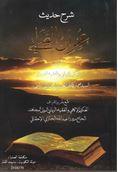
Sharḥ hadith `ʻImrān Ṣābī ("Commentary upon the Hadith of ʻImrān Ṣābī").
Found as the second major item within the composite volume commencing with the Kitāb Sharḥ āyat al-kursī :
كتاب شرح آية الكرسي ؛ و ... كتاب شرح حديث عامران صابي ؛ و ... كتاب لوامع الحسينية
Kitāb Sharḥ āyat al-kursī : wa ... Kitāb Sharḥ ḥadīth ʻImrān Ṣābī ; wa ... Kitāb Lawāmiʻ al-Ḥusaynīyah. [Tabrīz?]: Add, 1271/1853-4
- [2nd ed. ] Kitāb Sharḥ ḥadīth ʻImrān Ṣābī. Printed at the direction of Hajji Mirza `Abd-Allah al-Ha`iri al-Ihqaqi. Kuwait : Maktabat al-`Adhra', 1426/2005. 317pp.
[Kitāb] Sharḥ khuṭba ṭutunjiyya
كتاب شرح خطبة طتنجية
Scan of the opening page of the 1270/ 1853-4 lithograph edition of the sharḥ khuṭba al-ṭutunjiyya
Copy in British Library (Museum] London.
Kitāb sharḥ khuṭba ṭutunjiyya
("The Book of the Commentary upon the Sermon of the Gulf")
1st lithograph ed., Tabriz, 1270 /1853-4.
This 24,700 verse work (so Kirmānī, Fihrist No. 143 p.292 ) is a partial commentary upon about half of the khuṭba al-ṭutunjiyya (loosely) "Sermon of the Gulf" ascribed to Imam `Alī (c. 40/661) which can be found, for example, in the Mashāriq anwār al-yaqīn.. (Dawning-Place of the Lights of Certitude..) of Rajab al-Bursī (d. c. 814/1411) a collection of often esoteric or gnostic documents expressing a high imamology from the first Imam which some Shī`ī authorities have considered ghuluww ("doctrinally extremist"). This oration of the first Shī`ī Imam was allegedly delivered between Kufa and Medina and extends to about four pages of Arabic text. Ibrahimi [Kirmānī] reports that the original ms. is lost but refers to the now very rare old lithograph edition.
See this website for an attempted ongoing translation
The etymologically opaque, Arabic quadriliteral loan-word (from Greek?) تطنج / طتنج = T-Ṭ-N-J (= taṭanj or tuṭunj?) / Ṭ-T-N-J (= ṭatanj, ṭuṭunj..?) has been variously spelled and pointed, an issue which remains to be resolved. The title page of the (Tabriz) printed 1270/1853 edition of Sayyid Kāẓim's commentary on the "Sermon of the Gulf", is Sharḥ khuṭba al-ṭutunjiyya (emphatic ط = ṭ , the first of the two Arabic letter "t"s). Within this work the spelling and pointing طُتُنْج = ṭutunj is adopted and favored. On, for example, page 203 this spelling and pointing is found. It is also found on p. 174 where Sayyid Kāẓim glosses ṭutunjayn (loosely "two gulfs) with khalījayn (= "twin bays") in the course of commenting on `Alī's words; doubtless in the light of the text of the Kh-ṭutunjiyya which itself mentions khalījayn (= "twin bays"):
انا الواقف على الطتنجين
I am the one who is stationed over the two Gulfs (wāqif `alā al-ṭutunjayn)
Sayyid Kāẓim comments upon these words in the Sharḥ al-khuṭba al-ṭutunjiyya saying,
الطتنج هوالخليج المتشعب من البحر والطتنجين الخليجين منشعبان من البحرالواحد
كما ياتى تفسره من كلام
"The الطتنج ( ṭ-t-n-j = ṭutunj) is the bay [gulf, canal... al-khalīj) branching out (mutasha``ib) from the [cosmic] Ocean (al-baḥr). And the twin gulfs are the twin bays, doubly branching out from a single Ocean; just as the exposition of something is expressed through speech... (Sh-Tutunjiyya, 174)"
An excellent new edition of Sayyid Kāẓim Rashti's Sharḥ al-khuṭba al-ṭutunjiyya in 3 vols. Kuwait: Jami`a al-Imam al-Muhammadādiq [ed. Hajji Mīrzā `Abd al-Rasūl al-Ihqāqī] 1421/2001 has recently appeared:
Likeness of Sayyid Kāẓim Rashtī holding the Sharḥ al-khuṭba al-ṭutunjiyya (as found in the new printing)
Tafsīr āyat al-kursī (Commentary on the Verse of the Pedestal [Chair = Throne] Qur'an 2:255).
ADD IMAGE
تفسيراية الكرسى
Tafsīr/ Sharh āyat al-kursī
("Commentary on the Pedestal [Throne] Verse" = Q. 2:255).
Apparently written in 7,000 verses when SK was 20 years old. There is an old lithograph printing. Mss. versions can be found at : ADD
The first lithograph printing is the first item within the composite volume of the writings of Sayyd Kazim Rashti entitled Kitāb Sharḥ āyat al-kursī : wa ... Kitāb Sharḥ ḥadīth ʻImrān Ṣābī ; wa ... Kitāb Lawāmiʻ al-Ḥusaynīyah. Tabrīz: Add here, 1271/1853-4.
Following a prescript, this work opens as follows:
شرح آية الكرسي
من مصنفات السيد الاجل الاوحد المرحوم
السيد كاظم بن السيد قاسم الحسيني الرشتي اعلي الله مقامه
بسم الله الرحمن الرحيم
The Commentary upon the "Throne Verse" (Āyat al-kursī = (Q. 2:255) from the compositions of the most glorious and unique, the late Sayyid Kāzim ibn Sayyid Qāsim al-Ḥusaynī al-Rashtī, (may God make his station sublimely transcendent).
In the Name of God, the Merciful, the Compassionate.
الحمد لله الذي اجلي افئدة العارفين لتجليات ظهوره و انار قلوب السالكين لاشراقات نوره و شرح صدور العالمين لتشعشع لمعات بدوره و الصلوة علي سيدنا محمد الذي به استقر عرشه و كرسيه و هو الاسم الذي استقر في ظله فلايخرج منه الي غيره و هو الاسم الاعظم المكنون و النور الانور المخزون به نورت الانوار و به ظهرت الاسرار و به اشرق النور من صبح الازل و به وجدت الموجودات ما قل و جل و علي آله و اصحابه شموس الهدي و بدور الدجي و اعلام التقي و ذوي النهي و اولي الحجي و كهف الوري و ورثة الانبياء عليهم صلوات الله ما دامت الارض و السماء .
Praised be unto God Who shed the splendor of His radiance upon the inmost hearts of the mystic knowers so as to actualize the disclosure of the orient lights of His theophany. He set ablaze the hearts of the mystic wayfarers through the orient splendors of His Light and explicated the inner retreats [bosoms] of all the worlds for the purpose of dazzlingly illuminating the radiances of His cyclic schemata. And blessings be upon our Master [Sayyid] Muhammad through whom He settled down upon His Throne (`arsh) and His Seat (kursi) for he is the Name through the shadow of which eyes were solaced. Wherefore there did not emerge from before me aught save what is of Him for he [Muhammad] is the Hidden, Mightiest Name (al-ism al-a`zam) and the Light of Lights treasured up, the very one through whom the Lights found illumination. Through him were mysteries disclosed and Light irradiated from the Dawn of Eternity (subḥ al-azal). And through it him did all existence find realization....
♦



